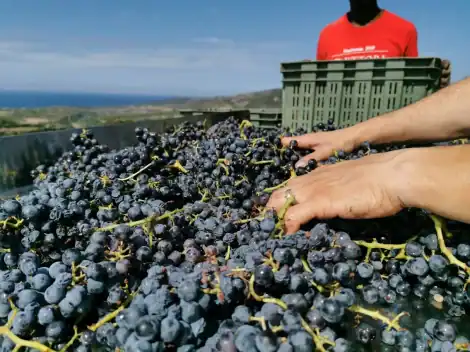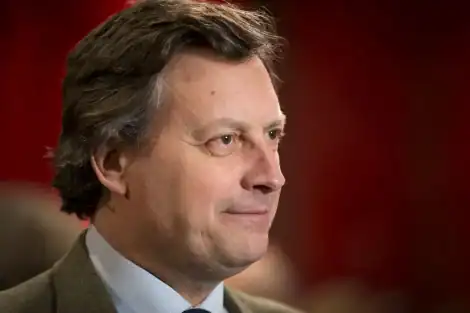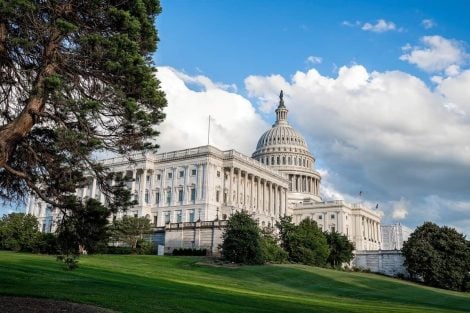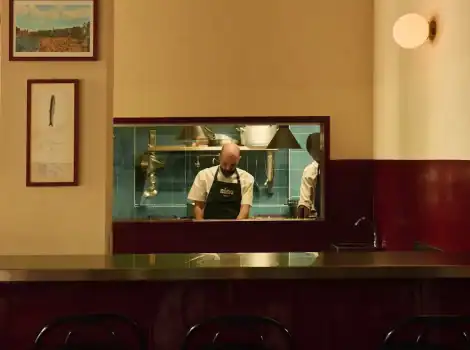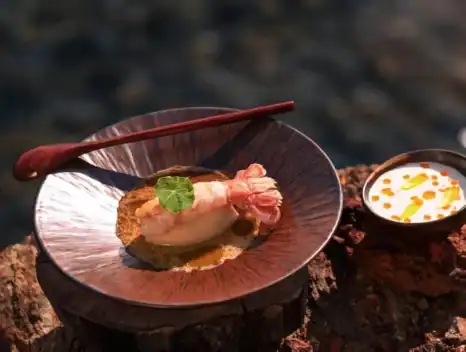It still feels like hearing the roar of the jet of the Kuwaiti royal family breaking the eternal silence of the vineyards. And it still seems to see those wealthy gentlemen dressed in Western attire obediently traversing the pathways lined with hedges on the Argiano estate in Montalcino, managed by Bernardino Sani.
The news of being proclaimed the "best wine in the world" by the most prestigious international magazine had just come out. And they were already there. In Sant'Angelo in Colle. To buy as much 2018 Brunello as they could fit on their jet.
The proclamation by Wine Spectator
"In the following days, others arrived, VIPs, newcomers, historic customers. Even LeBron James rushed here... Even he, who usually drinks 'Vigna del Suolo,' wanted to try this Brunello." Bernardino Sani recounts and laughs heartily. And one can understand why. He has won the game of life, and now he is enjoying it. Saying that he is the CEO of the Winery would be a simplistic summary of the situation. He somewhat invented the winery. He found it literally reduced to rubble and brought it to the top of the world. But since he is an intelligent man, and quite Sienese (from the Contrada della Selva, there is an eloquent photograph from 2010 on the internet where he seems to be kissing Fedora Saura, the legendary horse of the Palio, winner of three editions), he knows well that there is only one mistake he could make at this moment, and it would be a fatal mistake: taking himself too seriously. So, he talks about LeBron James, the Kuwaiti family, enjoys, and laughs: "Actually, to be honest, I think 'Vigna del Suolo' was better than the '18 Brunello."
So be it. Wine Spectator says it's not. And all that's left is to adapt. As, indeed, hundreds of thousands of consumers - pardon, wine lovers - around the world (but especially in America) will do in the coming days.
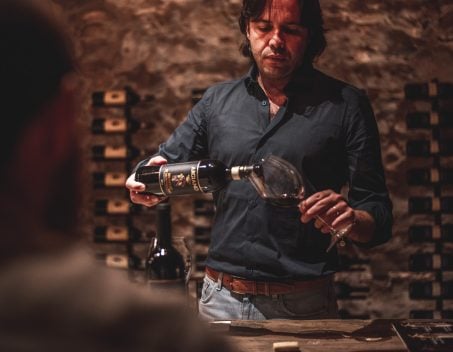
Bernardino Sani, CEO of Argiano. In the opening, Sani with the team leading the winery: Francesco Monari, Chief Operating Officer (in the center), and Roberto Caporossi, Cellar Master.
Okay. Let's start from here. Is it really the best wine in the world?
Well, it turned out well. Ten minutes after the proclamation, you couldn't find a bottle online. We were flooded with requests.
But is it the best?
Personally, I think "Vigna del Suolo" better expresses the value of the territory. But considering the criteria used by Wine Spectator, I think it's a correct choice. And above all, well-deserved.
How do you make the best wine in the world?
It's a story that goes way back. In 2013, this estate, now perfect in every detail, was in terrible shape. The cellar was unusable, the water tanks were a dump, and the barrels had the remains of decades of neglect. The estate dates back to 1580, gloriously survived the Renaissance, declined, then came back into fashion. It was even requisitioned by the Nazi army, which turned it into a sort of bunker...
(Sani stops and points to a wall riddled with bullet holes. It's a memory of a machine gun burst left there by the Americans).
In 2013, it was purchased by André Esteves (the Brazilian banker, one of the richest men in the world, editor's note), who decided to buy it from Countess Noemi Marone Cinzano and Bordeaux winemaker Hans Vinding-Diers and revitalize it.
"We started from scratch. The investments were not substantial right away. Before Esteves exhausted himself, he wanted to understand if he had made a good investment, in short: we had to self-finance production. But we couldn't use the original cellars, which were in terrible shape. So we created a new one, digging under the current parking lot. I wanted to produce a wine that had its own recognizable style, that was clean, essential, the result of a giant subtraction (Sani is an oenologist by training). I needed an environment just as clean and essential. To make a clean wine, you need a clean cellar. And we created it from scratch. Ugly, for sure. Devoid of any charm. But functional. And spotless.
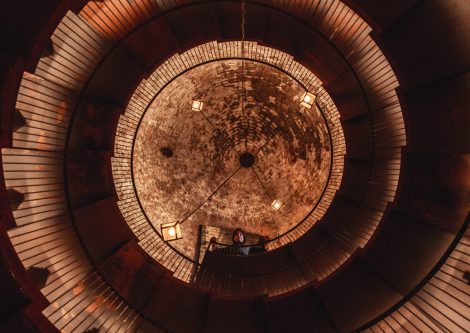
Bernardino Sani sulla suggestiva scala a chiocciola che porta nella barriccaia di Argiano a Sant'Angelo in Colle (Montalcino)
Did the results come immediately?
Obviously not. There was suffering. Argiano's wines had disappeared from the critics' radar for about thirty years. You don't reverse the course in a second. But from the beginning, we understood that we were going in the right direction.
When did the turning point come?
"The first real turning point was in 2021, and I'm not saying this to flatter, and it came thanks to Gambero Rosso. As I mentioned, Argiano had been out of the circuit of the major guides for almost thirty years. And suddenly Gambero noticed us and awarded the Tre Bicchieri to Vigne del Suolo 2015. I still remember when they told us. We were moved. For us, that award was the most important ever. Confirmation that we were right, that we were working well. The first real goal achieved. In a way, even more important than Wine Spectator's recognition.
Now don't exaggerate, for goodness' sake!
I'm serious. You can imagine the envy, the competition among producers, distributors, in a world like that of wine. Believe me. If we hadn't been baptized first by the experts at Gambero, today they would have told us that we had won an award for Americans, that we had received an award for Yankee palates. Instead, it's not like that. And your choice certifies it.
A choice also confirmed...
The following year. When our Vigne del Suolo '16 was awarded Wine of the Year. Gambero Rosso-Wine Spectator, for us, was a perfect combo.
Shortly after the proclamation by the Americans, the price of your Brunello skyrocketed... From 60 euros to 300. Is it really worth that much?
It reminded me that I have to track down Tittia (the Palio jockey, editor's note). Last year I had given him a 6-litre bottle... But he's not a great connoisseur; I need to warn him to use it with caution. I wouldn't want him to drink it with a head of foam.
How did an oenologist from Siena end up leading a company like this, which this year exceeds 8 million euros in turnover?
This is also a rather long story. After graduating, I had worked in the world of wine, first here at Col d'Orcia, then I chose to gain experience abroad. I specialized in marketing. I worked in America, in the Caribbean, in Santo Domingo, where I got married and had a daughter. Then when I felt the need to come back home, I started looking for a job here at Argiano where they were looking for a commercial director in 2012.
How did your relationship with Esteves start?
After the purchase of Villa Bell'Aria, he didn't come to see how things were going that often. The estate here was in pieces, inhospitable, with rooms full of old stuff, remnants from the fascist era, trophies collected by old nobles on who knows what safaris, bear skins, candelabras, abandoned pieces of furniture, garbage. The cellars, as I said, were even worse. He didn't like coming here that much. But when he arrived, someone was needed to be his guide, to explain the secrets of a place as ancient and prestigious as Argiano. We immediately had a great connection; we understood each other. Two years later, when he decided to change the company's leadership, things just weren't going well; he asked me to take on the role of CEO.
And you accepted right away?
I said to myself, "it can't get worse than this," and I accepted.
Well, in the end, you had all the skills, you knew the company, the territory, the market... you had international experience...
Yes, but the real key man was someone else. Francesco Monari, the agronomist, knows every inch of this land. I think he knows the history of every single plant, row by row. With sonar, he mapped the entire vineyard, differentiating the plots by soil composition. This allowed us to differentiate the entire vineyard work phase. Here it is full of clay and limestone of marine origin. Limestone gives richness, but clay, especially when it's dry, cracks the soil and allows the roots to go deep, in some areas up to three meters... Obviously, the grapes that give the best results are those grown where the roots go deeper.
And how did Monari end up working here?
He was already here. He was a worker. But it only took a minute to talk to him to understand that his knowledge of this land was probably the most precious asset of the company.
After golden years, some begin to see signs of crisis around Montalcino. Prices have risen a lot, but the municipality doesn't seem to shine.
Crisis may be too much. What is true is that there is a lack of a clear vision of the future and a lack of systemic mechanisms. Montalcino lacks politics; the city is not attractive for tourists, but not even for passionate young people and those who would come to work. For several months of the year, it is simply ghostly. Everyone goes on their own, there is a lack of infrastructure and horizons. Even the catering industry doesn't find new energy; there is a lack of direction.
And hospitality?
At the gala dinner of Benvenuto Brunello this year, a journalist had to run away because the structure closed its doors at 11. He slept in an area where the mobile phone doesn't work and feared spending the night in the open. I think it's significant. Today I could do like Sassaroli in Amici Miei when he shrugs off the devastation of Florence after the flood... "I'm on the hill!" I won, sell, increase production, I'm sitting on a land blessed by God that I was lucky enough to be able to enhance. But it makes no sense to say I'm on the hill: sooner or later, water reaches everywhere.
Now that Argiano is on top of the world. What's next?
Now we stay here. And we continue. We have several projects still in mind. We want to continue with Brunello for the clear paths we have taken. In spring, we will have the "Sustainability" Equalitas certification. Then with Esteves, we would like to try to expand, replicate the model elsewhere.
Any acquisitions in sight? Where?
Well, we're thinking about it... The idea is Sicily or Piedmont. The first would be a more fascinating challenge, the second more rational on a business level and therefore much more likely. Then, we focus a lot on the growth of Rosso. From America, there has been a sort of call for replacing Brunello with Rosso, with the somewhat provocative cry of: "It comes from the same grape but costs half." Obviously, it's an approach that doesn't make sense. But it's clear that the product has great growth potential, in every sense, including quality. I would bet on 2019."

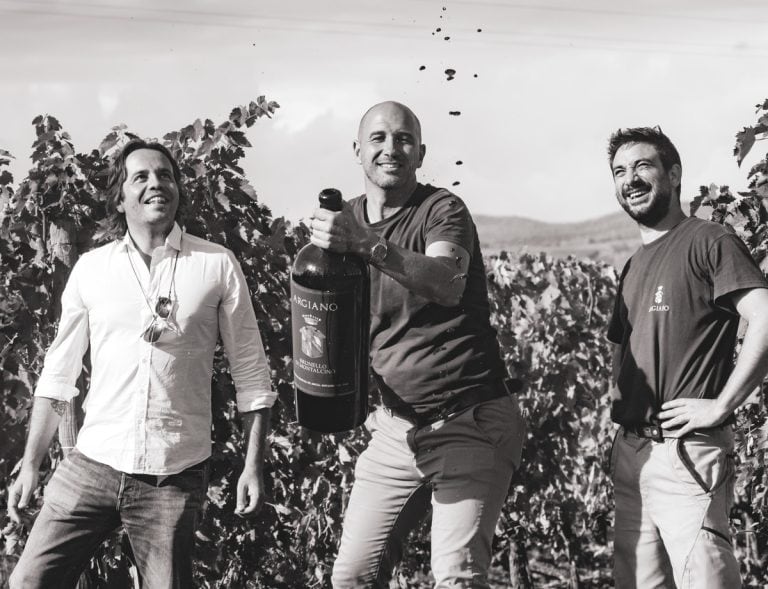
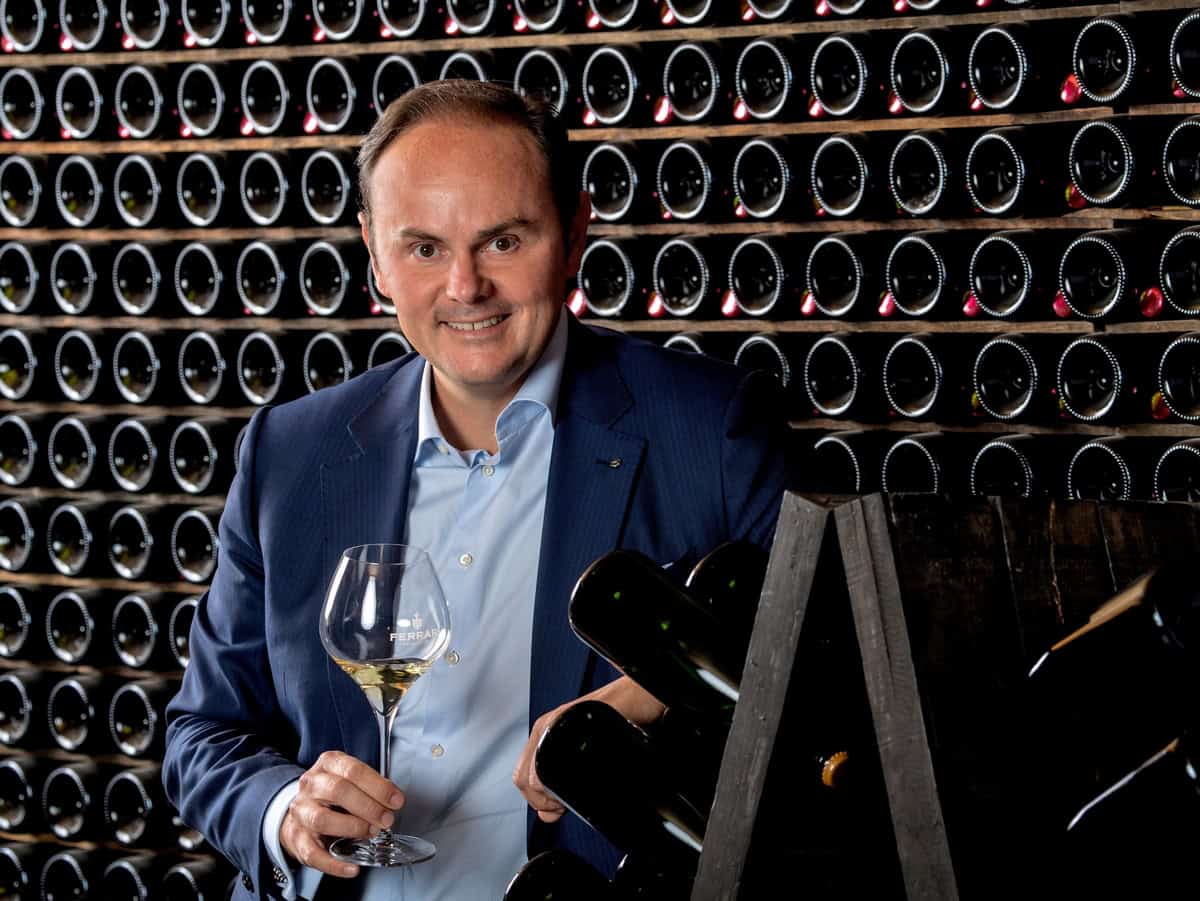 "Trump's tariffs? It's no longer time to be diplomatic. Europe must respond firmly." Matteo Lunelli speaks
"Trump's tariffs? It's no longer time to be diplomatic. Europe must respond firmly." Matteo Lunelli speaks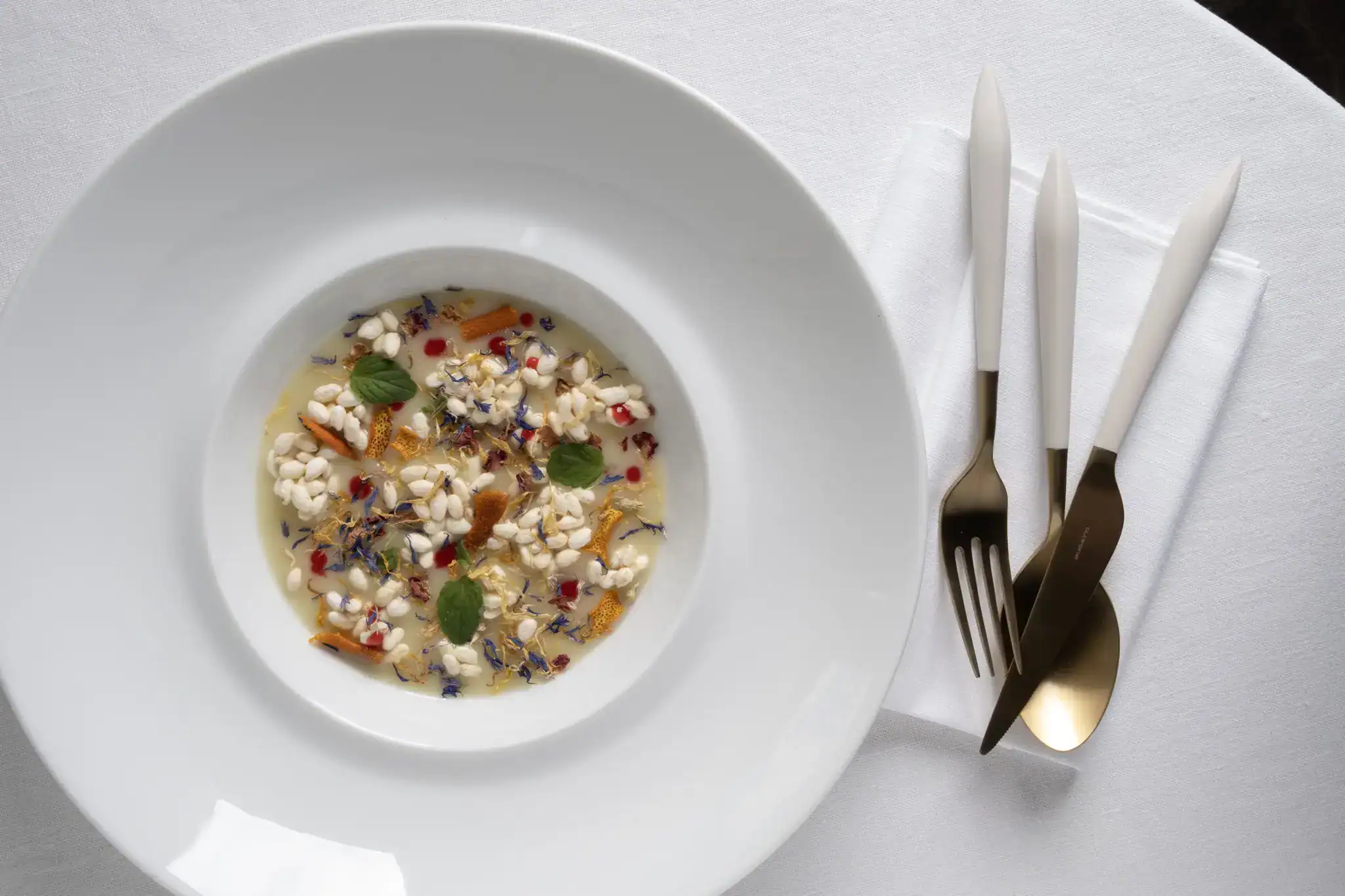 The Michelin star king of Liguria opens a new restaurant: here is Luv by Mauro Ricciardi
The Michelin star king of Liguria opens a new restaurant: here is Luv by Mauro Ricciardi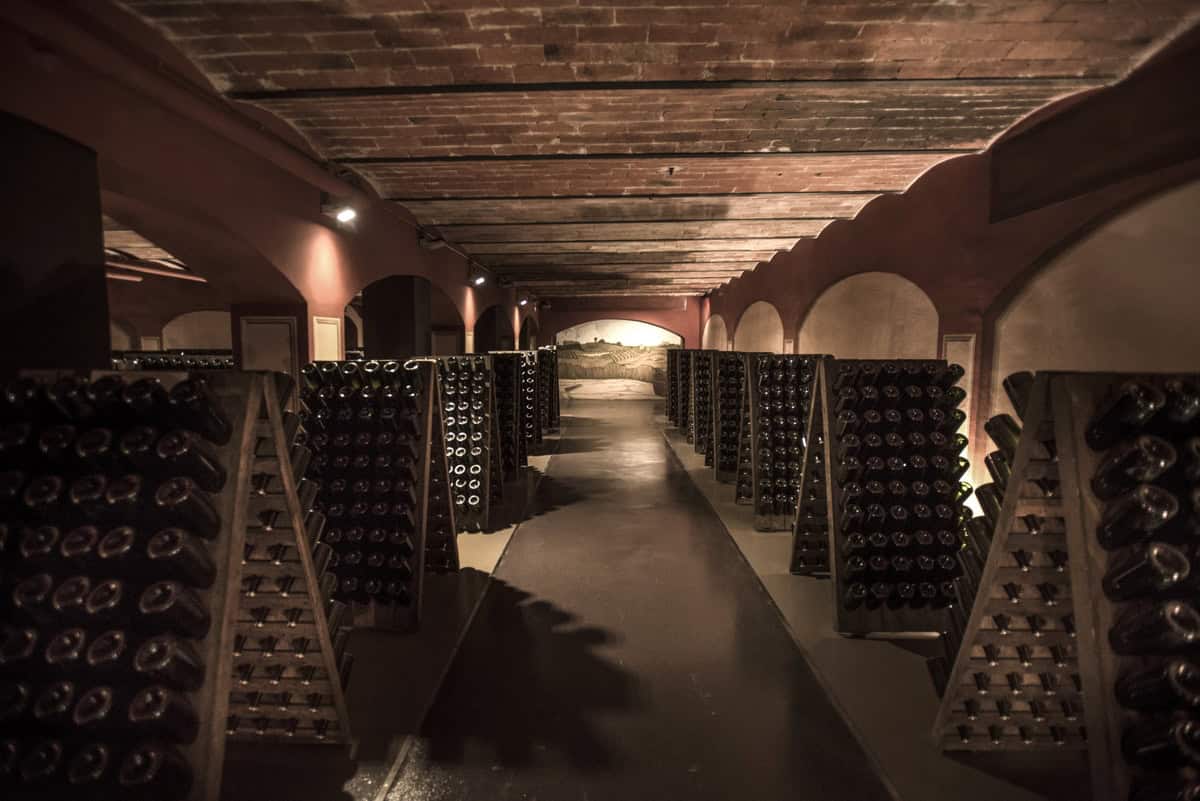 Alta Langa, splendour and mood swings: here’s what our tastings reveal
Alta Langa, splendour and mood swings: here’s what our tastings reveal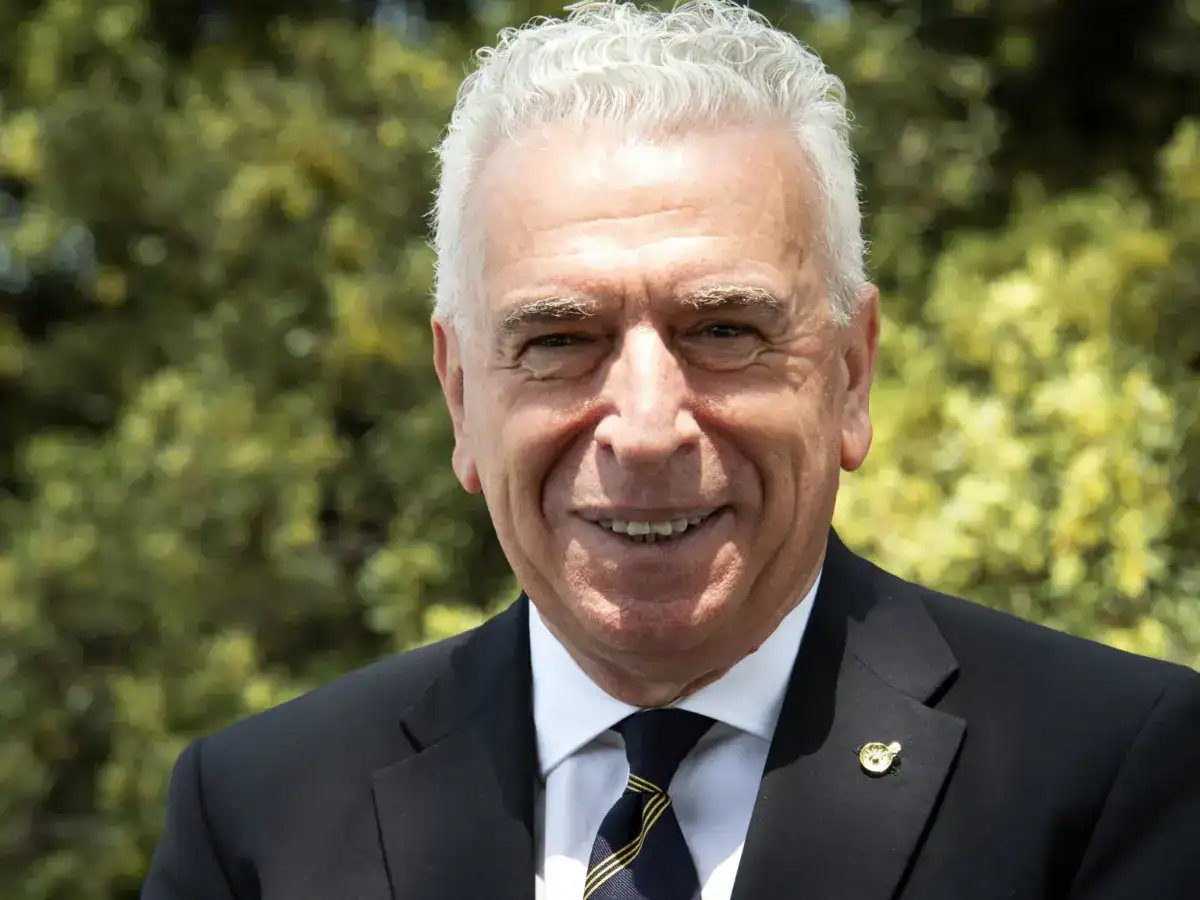 “Dealcoholised? Negative experiences, better to let people taste the must.” Interview with AIS President Sandro Camilli
“Dealcoholised? Negative experiences, better to let people taste the must.” Interview with AIS President Sandro Camilli